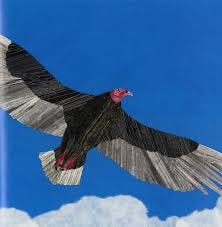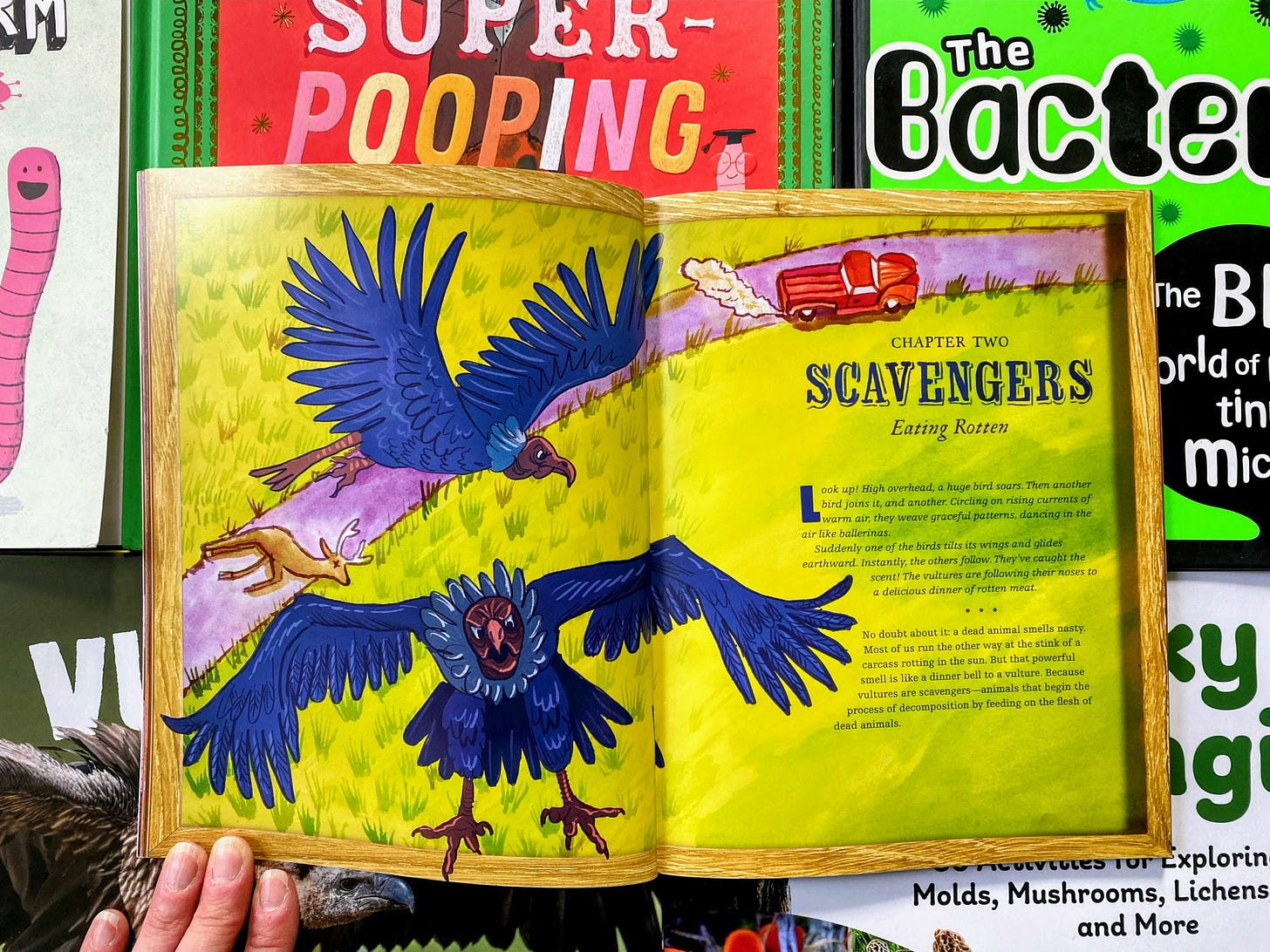Voracious Vultures
Why these birds captivate middle grade minds
As a first-grade teacher, there was a short poem about vultures in our reading curriculum, called “Vulture View,” by April Pulley Sayre. I was always amazed at the conversations that were sparked, the questions that arose, and the general wonder that emerged from such a short lesson. It always made me want to dive deeper. I always wanted to do a lesson on these fascinating creatures - or even an entire unit. So, now is my chance! As books began arriving at my house to peruse and curate for this unit, all three of my kids were excited to learn more. They jumped right into reading, asking questions, and learning about vultures. I knew I was onto something.
And so begins my first cross-curricular unit…Unsung Heroes Decomposers & Scavengers!
The unit will begin with learning about Scavengers. Just the word gets kids excited!
But why vultures? Get your student hooked…literally!
Vultures have an unusual look, which captures their attention immediately. Begin by looking at their distinctive features - their bald head, their hooked beaks, their large wings - and let your students wonder and notice together. They also play an extremely important role in our ecosystem - eating dead animals (another favorite fact for young minds.) Students will naturally wonder why this is important to our environment. These mysterious birds immediately engage our middle-grade students, without them even noticing they are tackling state standards.
Which standards you may ask?
This unit is built on NGSS standards, those building blocks used in most schools. No matter if you're homeschooling, in a classroom setting, or simply keeping your child engaged over summer break, these standards provide a roadmap for learning:
3rd grade: 3-LS1-1: Students can explore how scavengers play a role in the life cycle by consuming dead organisms, thereby contributing to the decomposition process. They can also investigate how decomposers break down organic matter, returning nutrients to the soil and facilitating the growth of new organisms. By examining the interconnectedness of scavengers, decomposers, and other organisms within ecosystems, students develop a deeper understanding of the life cycle and the importance of each stage.
4th grade: 4-LS1-1: Students can explore the physical adaptations of scavengers, such as sharp claws or beaks for tearing into carcasses, and the digestive systems of decomposers, which enable them to break down organic matter. Students strengthen their understanding of the relationship between structure and function in living organisms by examining the structural features of scavengers and decomposers and how they contribute to their survival, growth, and reproduction.
5th grade: 5-LS1-1: Students can investigate how decomposers play a crucial role in recycling nutrients, such as carbon, nitrogen, and phosphorus, from dead organic matter back into the environment. By understanding how decomposers break down organic matter and release nutrients into the soil, students can support the argument that plants obtain the materials they need for growth primarily from air and water, supplemented by essential nutrients from the soil. This reinforces the concept of interconnectedness within ecosystems and the importance of decomposers in sustaining life on Earth.
Learning Adventures
This unit is all about hands-on fun. Here's a sneak peek at some activities:
Non-Fiction Detectives: We become researchers, investigating different scavengers. Check out my books on scavengers, decomposers, and more here. We write reports packed with cool facts and precise vocabulary, describing their habitats and special adaptations.
Awesome Animal Showcases: Students pick a favorite scavenger and create a poster presentation, complete with text features, showcasing their amazing discoveries.
"Rotten" Reads and Beyond: We dive into the world of decomposition with an interactive read-aloud of "Rotten." Graphic organizers, experiments, and thought-provoking questions make learning exciting and engaging. Check out my IRA on Teachers Pay Teachers here.
A Shared Journey
One of the best things about this unit is the opportunity to learn alongside your child. Just like my experience with my own middle grader, exploring decomposers together can ignite a love for science that goes beyond the classroom walls.
Stay tuned for my next post, where I'll share some fantastic resources to bring this decomposer unit to life!
Liz





